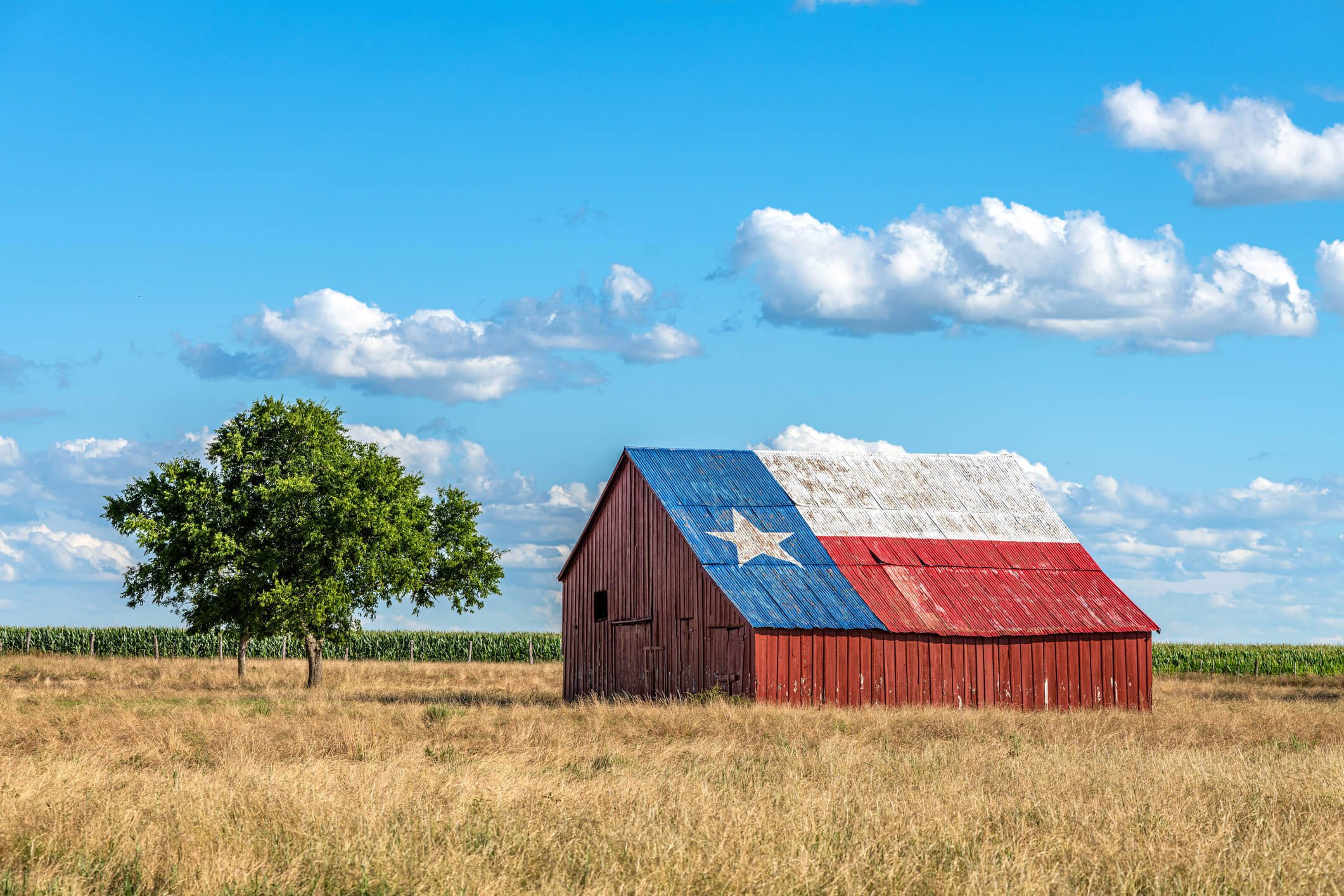Investing in Farmland and Ranchland in Texas
Owning a farm or a ranch property in Texas is a good and viable investment. There are many factors why it is a good idea to invest in these kinds of properties, the first thing that comes to my mind is the price of the land.
Agricultural land in Texas is relatively inexpensive, the average cropland value in Texas is $2,150/acre as compared to the national average of $4,420/ acre. Aside from being less pricey as compared to other states, it has the potential to produce a good income for those who will be investing in it as much of the state is fertile soil. This has made Texas agriculture among the largest farm sectors in all of the United States.
Land for Farming and Ranching
There are 130 million acres in the state which are devoted to farming and ranching. Texas leads the United States in the total number of farms and ranches with about 248,000 farms and ranches. The average size of a farm in Texas is about 411 acres.
These farms and ranches contribute $ 25 billion to the Texan economy. Beef production rakes $12.3 billion in sales, followed by poultry and eggs at $ 3 billion while cotton generates $2.6 billion in revenues.
Part of the state’s largely booming agricultural sector would be credited to mechanization, agricultural research, farm-to-market infrastructure, the presence of processing mills, and state/federal government support. These factors have made Texan agriculture one of the largest farm sectors in the nation.
With the inherent advantages of having a big agricultural industry in the state, owning a ranch and farm in Texas can provide you with good profit margins if you intend to make it productive.
Benefits of Buying Land in Texas
There are advantages and benefits when you buy a property in Texas particularly if you will use it for agricultural purposes like a farm or a ranch. Here are some of them:
Property Tax Exemptions
When you buy land in Texas you can apply for agricultural exemption. This will put your property in special valuation that can significantly reduce the amount of property tax that you would be paying for the land.
Generally, that property should be around 10 acres of qualified agricultural land, which means it has been used for five of the past seven years for agricultural purposes such as crop cultivation, livestock raising, beekeeping, and other similar farm activities. You can check each county that has jurisdiction over the property as they have different minimum acreage requirements and some counties would look at the intensity of agricultural activity.
Agricultural exemption is not really an exemption, but a special calculation where property taxes are determined on the land’s productive agriculture value, and not the usual fair market value which are bases for most property taxes valuation.
This idea of a special valuation for agricultural lands in the state is based on the Texas constitution.
(a) All land owned by natural persons which is designated for agricultural use in accordance with the provisions of this Section shall be assessed for all tax purposes on the consideration of only those factors relative to such agricultural use. "Agricultural use" means the raising of livestock or growing of crops, fruit, flowers, and other products of the soil under natural conditions as a business venture for profit, which business is the primary occupation and source of income of the owner.
Writing Off Expenses
For those who utilize their lands for farming in Texas, they can file a schedule F in their Federal income tax returns. With your schedule F, you can deduct the costs incurred as ordinary and necessary expenses on your farm. This will reduce the profit or increase the loss on which you’ll owe taxes. Some of these expenses which are commonly deducted include:
Cost of livestock and feed
Seeds
Fertilizers
Wages to employees
Interest on farm-related loans
Depreciation to cover part of farm equipment costs
Insurance premiums
Cost of utilities
Government Support
If you want to invest in agricultural lands in the state, you might take note that one advantage in having and maintaining farmland or ranchland in Texas is the amount of government support being given to farmers.
Texan farmers receive the highest subsidies given by the federal government as compared to other states. These subsidies went to growers of corn, sorghum, (how long does sorghum last?) wheat, and cotton which are commodity crops. These subsidies would help in procuring needed farm inputs such as seeds, fertilizers, and chemicals.
However, the grant of subsidies might be controversial as this covers growers of select crops and an estimated 81% of Texan farmers have not collected subsidies. However, farmers benefiting from the subsidy say the cash support is very much needed in maintaining their farms that grow important commodity crops.
Financing
Buying farms or ranchland is an expensive investment as it involves a large acreage. You might take out some financing to purchase your land alongside making the necessary improvements. There are lenders or finance companies in Texas that can realize your dream of owning agricultural property, you can search for them online. Included in their sites are information on the terms of the loan and other prerequisites in applying for financing.
The state government has an agricultural loan guarantee program or the ALG under the Texas Agricultural Finance Authority which provides financial assistance to establish or enhance farm or ranch businesses, these come in the form of guarantees on a tiered structure, not to exceed $500,000 or 80% of the loan amount, whichever is less.
More Affordable
As was stated in the first paragraphs of the article, Texas farms are some of the least expensive compared to other states. The average price per acre is lower than the national average. Also you might as well invest in farmland in the state now as farmland value in Texas is going up. According to the United States Department of Agriculture’s Land Values Report in 2020, the value of agricultural land in Texas has gone up by 2.4%.
Utilities Are Available
When you’re buying farmland or any land in a rural area you might want to check if utilities such as power and water are connected to your property. Here in Texas, electricity is available in rural areas that run parallel to the roads that crisscross the state.
There are different water utilities serving rural areas in Texas. But if the farmland is very remote you might need to drill a well where you need to apply for permits.
Profitable
Investing in farmland and ranchland is a profitable venture in Texas. Aside from gaining income from agricultural produce from your property, lands can also host other businesses like an inn, a farm-to-table restaurant, or a u-pick farm.
Agritourism is a booming industry in Texas. Many rural landowners in the state have utilized their farms for entertainment, recreational and educational purposes as a way to generate added revenue or create new businesses.
As a way of helping and encouraging agritourism in the state, the Texas Agritourism Act was passed in 2015, the state law provides liability protection for agritourism business owners when an injury or damages is suffered by an agritourism participant arising from an agritourism activity (provided that before the activity the business owner posts the required signs or obtains from the participant a written agreement).
Investing in a Farm
You might want to invest in a farm or ranch without having to sweat or toil in getting income out of that property. There is an option of putting money into agriculture and just waiting for its returns.
According to the USDA, 30% of US farmlands are owned by non-operator landlords. These are groups or individuals who want to capitalize on farming or farm-related operations without hands-on involvement.
There are farm investment platforms where one can put money on these farms, among the popular platforms are Acretrader and Farmfundr. These companies let farming experts and specialists do the actual operations boosted by cash provided by the investors’ capital.
Farms, ranches, and other agricultural property and businesses are worthwhile investments with a growing population that would need more food, also your investments in farms is not correlated with the up and downs of the stock market and would appreciate with land prices and farm productivity
Also investing in farms is a noteworthy cause and advocacy, aside from creating more economic opportunities for rural areas and farming communities. Investment is a way of stopping land loss where farmlands are swallowed by urbanization caused by the state’s growing population.
Texas is the number one state in the country in terms of losing farmlands to other uses. From 1997 to 2017 Texas lost 2.2 million acres of working agricultural lands, one reason why many are selling farmlands is due to the huge capital involved in maintaining and developing the farms.
In Texas, Chris Rawley, a real estate investor, together with business partner Austin Maness started Harvest Returns in 2016 one of the nation’s first crowdfunding websites for agricultural investments.
Harvest Returns was created primarily for farmers who are looking to raise between half a million dollars to three million dollars, who do not have access to traditional USDA loans, and who are focused on specialty crops, organic farming, or non-traditional livestock operations.
Since its founding in 2016 Harvest Returns has raised $25 million in capital and has funded 25 farms and ranches with $5.5 million distributed to investors.
There is Money in Farms
Indeed, farms and ranchlands in Texas are great investments. The state has a well-developed and vibrant agricultural economy well-supported by the state and federal government plus the fact the cost of agricultural acreage is lesser compared to other states.
Whether investing as a hands-on farmer or a savvy investor these properties would provide you handsome profits and ROIs that come when investing in an essential industry, an industry that feeds people… a growing number of people.
Don’t forget to check out our all in one guide for homesteading, farming and ranching in Texas.








